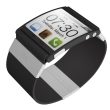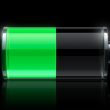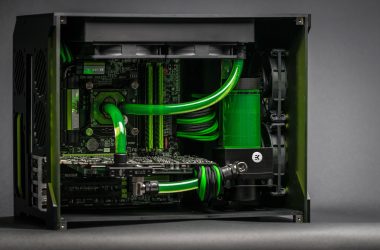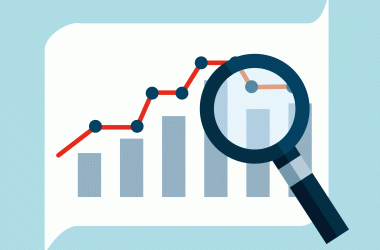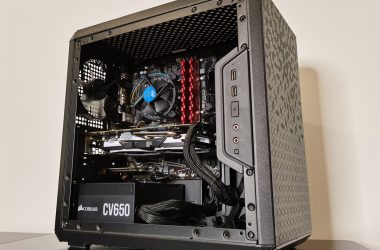In the coming days, months and years the world’s health care industry is poised to face a number of challenges. Â As the global population continues to grow, economies remain stagnant (or slide), and new infectious diseases emerge, the medical industry is going to need to develop new technologies and systems in order to meet these challenges head-on. Â Â Luckily, it would seem that all the cards are falling into place; in fact, one might even say that things are progressing beyond the point that most people are even aware of.
Prevention is without a doubt, the best approach for treating any illness in general. Â After all, if a person never contracts a disease there won’t be any additional costs incurred and of course their body won’t be damaged or afflicted either. Â Aside from better and more individualized diets and changing or removing bad old habits, new integrated systems are being erected which might make it possible to prevent a person from even coming into contact with viruses or harmful bacteria.
Your phone will know you’re sick before you do
We all know how useful and incredible our smart phones are, but we’ve only scratched the surface, apparently. Â There are a great number of scientists, medical researchers, and technologists who want to integrate systems for tracking infectious diseases via smart phones. On its surface, this makes a lot of sense as these devices are always in close contact with people and they are able to easily collect and transmit data discreetly.
Just take this excerpt from an article on CNN.com (written by Mark Curtis), for example:
‘In the not-too-distant future, you’ll receive a full diagnosis and cure from your smartphone before you have even realized you’re unwell. While this may seem like science fiction, it’s on the cusp of becoming a reality. Digital is set to embark on a path of radical transformation in the health and wellness sector and in doing so it will help us to overcome some of the most significant challenges we face in health care.â
Simply put, it would appear that there are plans in the works to create what might become a preeminent tool in fighting the spread of disease(s). Â The way it would work is simple; perhaps you buy some type of ‘dock’for your smartphone which measures bio-functions (there are already similar systems out there for measuring blood-sugar levels). Â Some have even gone so far as to say that this is akin to ‘hacking the human bodyâ, but as long as we’re still talking about technologies that measure, that’s not exactly the case.
Similarly, new remote diagnosis programs are being developed which hope to extend the reach of doctors beyond hospitals and clinics and into the homes of people everywhere. Â For example, new technologies being developed by Sense.ly hope to really up the ante when it comes to virtual care. Â They are in the process of creating a technology-assisted method for diagnosis which doctors can both participate in directly or automate. Â Â In other words, each patient would speak with an ’emotionally-reactive’avatar which would be linked with their device/account. After answering a series of questions, the avatar would attempt to perform a simple diagnosis (alone or with additional human assistance). Â Moreover, if other devices capable of collecting physical data or samples emerge and become popular, individuals could receive an in-depth diagnosis (which features hard data). Â As previously mentioned, there are already docks which can measure blood sugar and transmit bio-function data directly to a smartphone, so it’s really just a matter of creating different types of monitoring devices and making them commercially available.
Here are a couple of excerpt from an M.I.T. Technology Review piece that demonstrates just how useful these technologies can potentially be:
‘It would change our whole model,’says Carlisle, who is running the trial as the public hospital looks for creative ways to extend the reach of its overtaxed budget and staff. ‘We don’t want to replace therapists. But in some ways, it does replace the need to have them there all the time.â
‘Receiving remote medical care is becoming more common as technologies improve and health records get digitized. Sense.ly, the California startup running the trial, is one of more than 500 companies using health-care tools from Nuance, a company that develops speech-recognition and virtual-assistant software. ‘Our goal is basically to capture the patient’s state of mind and body,’says Ivana Schnur, cofounder of Sense.ly and a clinical psychologist who has spent years developing virtual-reality tools in medicine and mental health.â
What’s the point of all of this, you ask? Â For starters, these systems will help to better leverage the way doctors utilize their time. Â Anyone that has direct experience in medicine probably already knows just how frantic the schedules of physicians really are. Â As we continue to see the global population grow, additional strains are being placed on the entire medical establishment. Â In fact, without these technologies, doctors might not be able to easily treat many people in the near future. Â Right now, such mobile-enabled diagnosis and tracking tools are needed due to the fact that many populations around the world are aging and constantly in need of care. Â Add to that the fact that economic strains are weighing down on many people and you have a situation that requires extremely creative solutions.
Moreover, smartphone-enabled disease tracking systems can help to ease the strain on the entire field of medicine. Â For example; let’s say that in one year a mild strain of influenza ends up costing a city’s medical establishment 2 million dollars to treat and control; well, what if it were possible to eliminate the spread of the illness in the first place? Â Assuming that smartphones could be used to track the spread of infectious diseases, it would definitely be possible to identify where they initially broke out so that a strategy could be put into place in order to keep them from spreading. Â In this way, hospitals, doctors, and medical systems would be overburdened by scores of people dealing with more easily treatable conditions, like influenza. Â Of course there would also need to be checks and balances, you wouldn’t want the medical establishment integrating with the police to track down suspected infected individuals. Â However, these are issues which must be dealt with and addressed once the solutions are on the table, so to speak.
Aside from virtual assistants which might eventually become more accurate at diagnosing conditions than human doctors, there are additional technologies which are also transforming healthcare right before our very eyes. Â Perhaps one of the most interesting developments is the use of fiber optics for monitoring patients. Â For instance, Professor Mark Bradley of the University of Edinburgh and his team of scientists are working on a system which would allow for people to be constantly monitored in a very discreet fashion. Â Microscopic probes which transmit data long fiber optics would be inserted into sensitive areas like the bloodstream or lungs so that continuous data can be collected.
Needless to say, the use of fiber optics technology has the potential to completely revolutionize the way medicine is approached and illnesses are treated. Â Although we are fairly advanced in our collective medical knowledge and use of treatments (as any doctor might agree), there are still ‘knowledge gaps’to contend with. Â Simply put, this type of fiber optic-assisted tech could not only help to better treat certain conditions, it might also provide us with additional insights into how certain diseases develop and progress.
Here are a few notable excerpts from a eurekalert.org piece which should further clarify the concept:
‘The probe will be able to detect and monitor up to 20 key indicators of disease. Â Along with measuring things such as oxygen, acidity and glucose in the patient’s blood and lungs, the device will deliver tiny amounts of tracer compounds that will highlight specific bacteria and viruses and other harmful substances that could damage the lung. Â The signals from these compounds will be transmitted to a computer to be converted into real-time, easily understood disease readouts for doctors.â
‘Experts say that having such information quickly at the bedside will revolutionize respiratory medicine through dramatically improving the ability to accurately diagnose, monitor and treat lung disease. Â It is hoped that the probe will be used in the future in acute urinary, gastrointestinal and reproductive tract problems. Â Professor Mark Bradley, of the University of Edinburgh’s School of Chemistry who leads the project said: “Our Fibre-based Optical Sensing and Imaging Platform (FOSIP) will give doctors the ability to rapidly diagnosis patients and inform them about the best drugs for patients. It will monitor a patient’s condition in real time â without the need for cumbersome equipment or ionizing radiation.”
While a great many thinkers, physicians, scientists and analysts are predicting that technology is going to transform the future of health care, one might argue that it’s already happening. Â These technologies (and many others) are already out there, they exist (as either a prototype or in a finished state), so you can rest just a little bit easier knowing that solutions are ‘on the tableâ, as it were. Â As health care becomes increasingly technology-driven we’re also likely to see it improve on multiple levels / fronts. Â All in all, these developments represent a win-win for not just medical practitioners, but for the citizenry as well.






